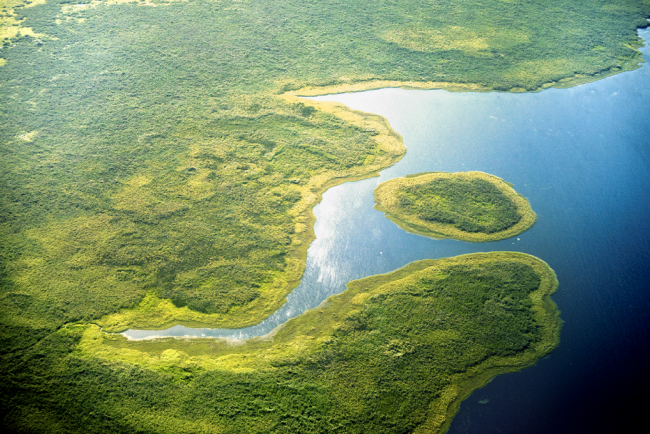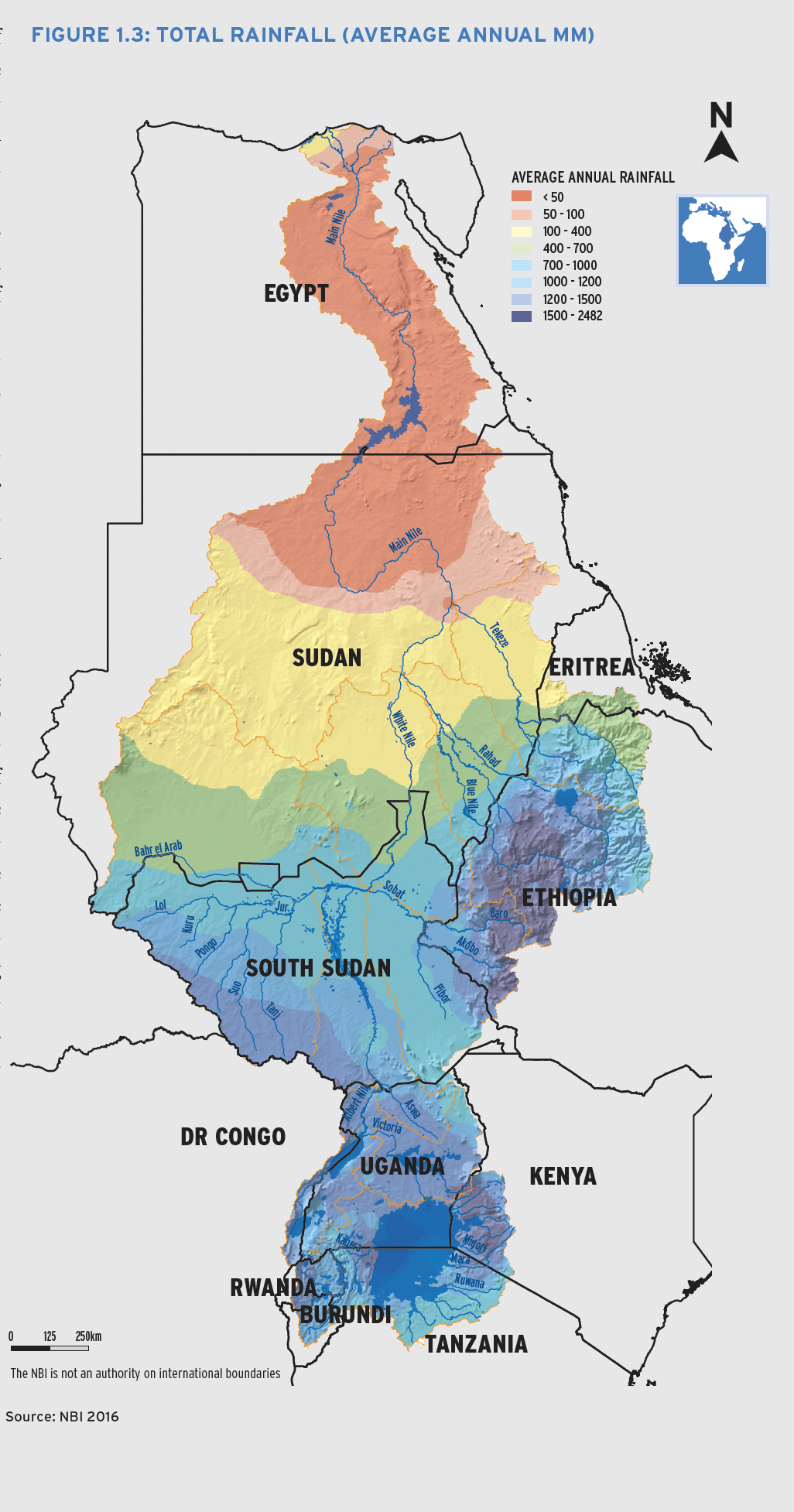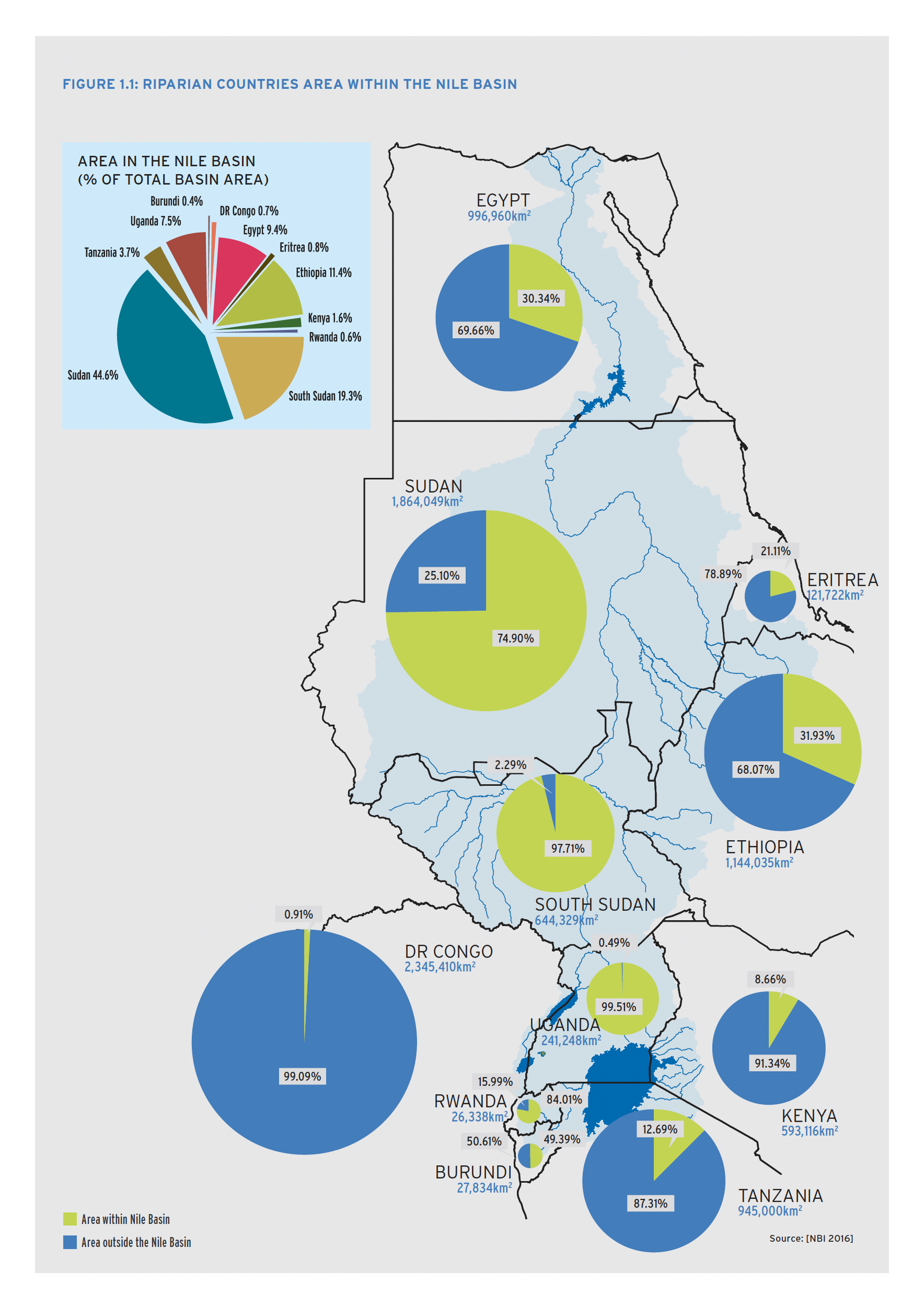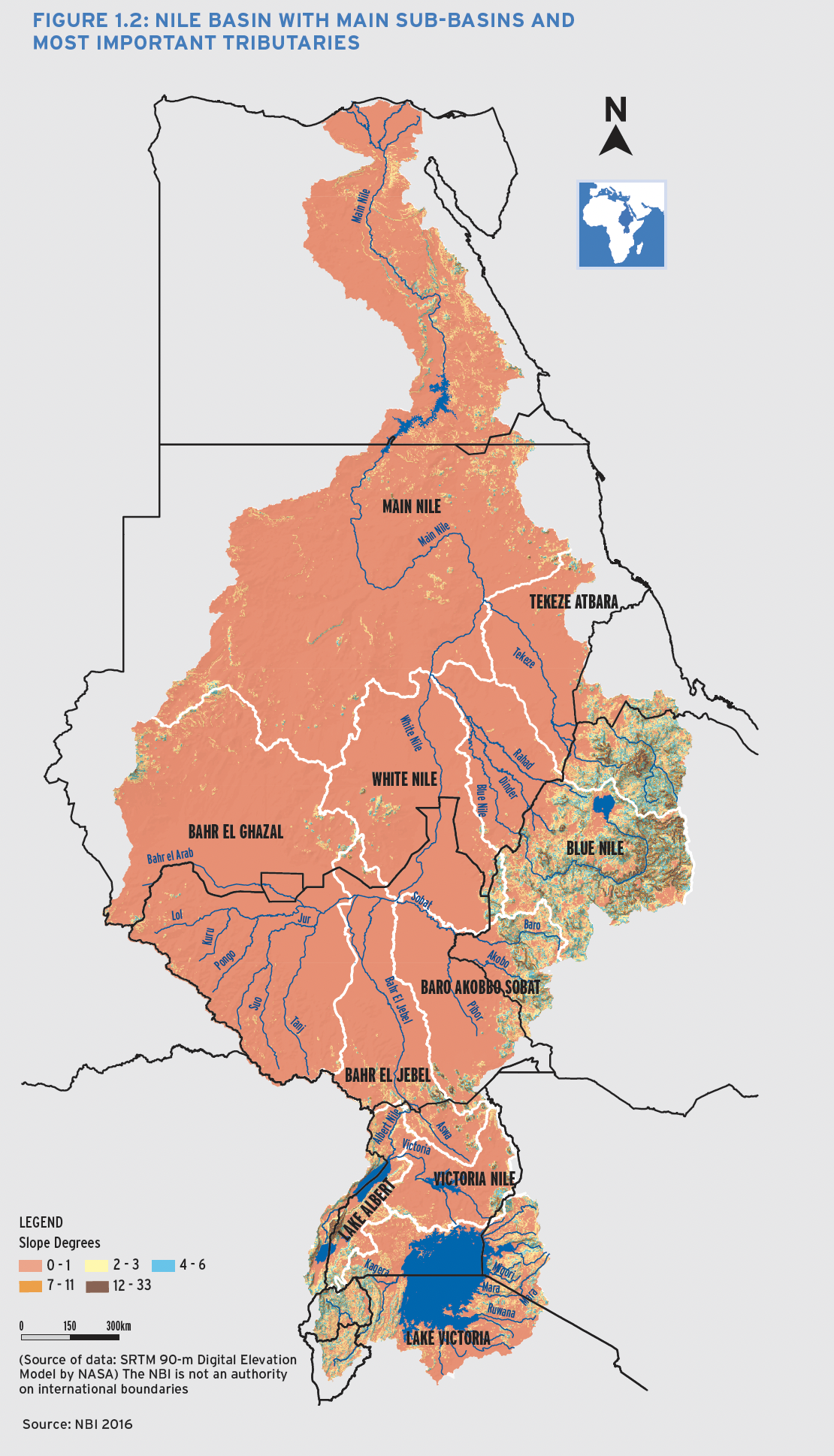
Over the years, several of the Nile Basin countries have been among the fastest-growing economies on the African continent. Across many parts of the Basin, great advances have been made in tackling poverty, malnutrition, health issues and unemployment. These developments have, to a large extent, depended on the availability of water resources, especially given the important role agriculture plays in the Basin.
The river network of the Nile, including the many large wetlands and lakes it sustains, comprises a critical source of water for some riparian countries, especially those that are fully, or to a large extent, situated within the boundaries of the Basin.
However, as in many other regions around the world, water-related issues have grown into serious risks in some areas of the Nile Basin. Rising abstractions from rivers and aquifers, rapid land-use change and heavy pollution have exerted increasing pressures on water resources and ecosystems that sustain their continuous provision.
Driven by growing populations and higher standards of living, there will be an ever higher demand for food, fibre and fuel, which, together with the impacts of climate change, will further intensify these pressures in the future. If water security is not placed at the heart of planning and management decisions, water challenges could disrupt development progress in the future.
In a transboundary basin like the Nile, the sustainable management and development of water and natural resources to achieve sustainable development objectives will require cooperation and coordination of various actors within and across the Basin countries.
While pressure on water resources in the Nile Basin is increasing, a wide range of options, such as rainwater harvesting, groundwater use and desalination of sea water, still exist to achieve water security. Some of these require transboundary water cooperation, whil...
Water Security
While pressure on water resources in the Nile Basin is increasing, a wide range of options, such as rainwater harvesting, groundwater use and desalination of sea water, still exist to achieve water security. Some of these require transboundary water cooperation, while others can be implemented at national or even local level. It should be noted that a significant amount of rainwater is uncollected and unutilised, while water productivity from irrigated agriculture in the Nile Basin can be greatly improved.
The Nile Basin Initiative has initiated a basinwide strategic hydrometeorological and water quality monitoring system to strengthen transboundary water resources planning and management in the basin.
Water scarcity in the Nile Basin is directly related to food security, as the agricultural sector is by far the largest consumer of the Nile waters, and because demand for agricultural produce is set to increase very substantially because of demographic trends and so...
Food Security
Water scarcity in the Nile Basin is directly related to food security, as the agricultural sector is by far the largest consumer of the Nile waters, and because demand for agricultural produce is set to increase very substantially because of demographic trends and socio-economic development to which countries aspire. Additional food is also needed to address undernourishment experienced by some segments of the population in all Nile countries except Egypt. While food security can be achieved through a combination of local produce and imports, food for the large rural population must be produced in close vicinity to its actual consumers. It is noted that the dominance of the rural population in the Nile Basin will persist until 2030 and beyond.
Another issue of concern is the very large food losses observed in the Nile Basin. Although no data are currently available, these losses are estimated at 50% or more. Food is mainly lost during the early (harvesting) and middle stages (processing) of the food supply chain. Food losses represent a waste of scarce natural resources, reduce the profitability of agriculture, and translate into poor water productivity. Hence, reducing food losses is an effective means to strengthen water and food security in the Basin.
The preference of several Nile countries for hydropower provides the link between water security and energy security in the Nile Basin. Currently, some 19% of the Nile Basin's hydropower potential has been developed, but this figure will significantly increase in the...
Energy Security
The preference of several Nile countries for hydropower provides the link between water security and energy security in the Nile Basin. Currently, some 19% of the Nile Basin's hydropower potential has been developed, but this figure will significantly increase in the near future, when several large hydroelectricity projects in Ethiopia and Uganda will have been completed and be online. Hydropower is the preferred choice for several riparians because of its long economic life and low per unit energy costs. Being able to produce electricity at low cost is imperative to attaining diverse development objectives, since power is currently too expensive for many low and middle-income consumers.
Impportant progress is being made in establishing regional power grids, and in linking the Nile Basin countries to regional grids such as the South African Power Pool. Work to construct transmission infrastructure between several riparians and other grids is ongoing and scheduled for completion soon.
The rich natural resouorces and outstanding biodiversity in the Nile Basin face unprecedented threats. Rivers, wetlands, lakes, and forests provide various ecosystem services that form the foundation of livelihoods for millions and the Basin's economy, which is based...
Environmental Sustainability
The rich natural resouorces and outstanding biodiversity in the Nile Basin face unprecedented threats. Rivers, wetlands, lakes, and forests provide various ecosystem services that form the foundation of livelihoods for millions and the Basin's economy, which is based largely on subsistence farming. To safeguard them for decades to come, the protection of water-related ecosystems needs to be at the heart of decisions in the management and development of water resources.
Rapidly growing populations and economic growth drive the demand for food. Consequently, rivers and wetlands increasingly compete with agriculture for sufficient fresh water, which is the lifeline of these ecosystems.
Recent climate projections (IPCC, 2018) predict that the Nile region is subject to a warming and more variable climate. The main climate impacts over the Basin are manifested in increased aridity, higher temperatures, more frequent and more severe flooding, more freq...
Climate Change Resilience
Recent climate projections (IPCC, 2018) predict that the Nile region is subject to a warming and more variable climate. The main climate impacts over the Basin are manifested in increased aridity, higher temperatures, more frequent and more severe flooding, more frequent and more intense droughts, and higher variability of rainfall and associated streamflow. However, the extent of future climate change in the Nile region is not yet clear, and different parts of the Basin will be affected in different ways.
The analysis of the state of resilience to climate impacts in the Nile Basin reveals that preparations are inadequate, and that climate change poses serious challenges for people living in the Nile Basin. Failure to adequately strengthen resilience to climate impacts could have potentially large adverse implications for the ecological, economic, and social systems in the Nile Basin.
A scarce and shared resource requires careful management. Ensuring water security for all uses and preparing for climate change requires substantial managerial resources. The capacity for water governance in some Nile countries is affected by factors such as insuffic...
Transboundary Water Governance
A scarce and shared resource requires careful management. Ensuring water security for all uses and preparing for climate change requires substantial managerial resources. The capacity for water governance in some Nile countries is affected by factors such as insufficient staffing, insufficient funding, inadequate enforcements of water regulations, insufficient data and modelling tools, shortages of funds for investment in water infrastructure, etc. This situation poses a risk to achieving water security and it is a matter of concern. What is promising is that almost all Nile countries have institutionalised most elements of integrated water resources management (IWRM) in order to address the multi-sectoral dimension of water security and avoid fragmentation.



